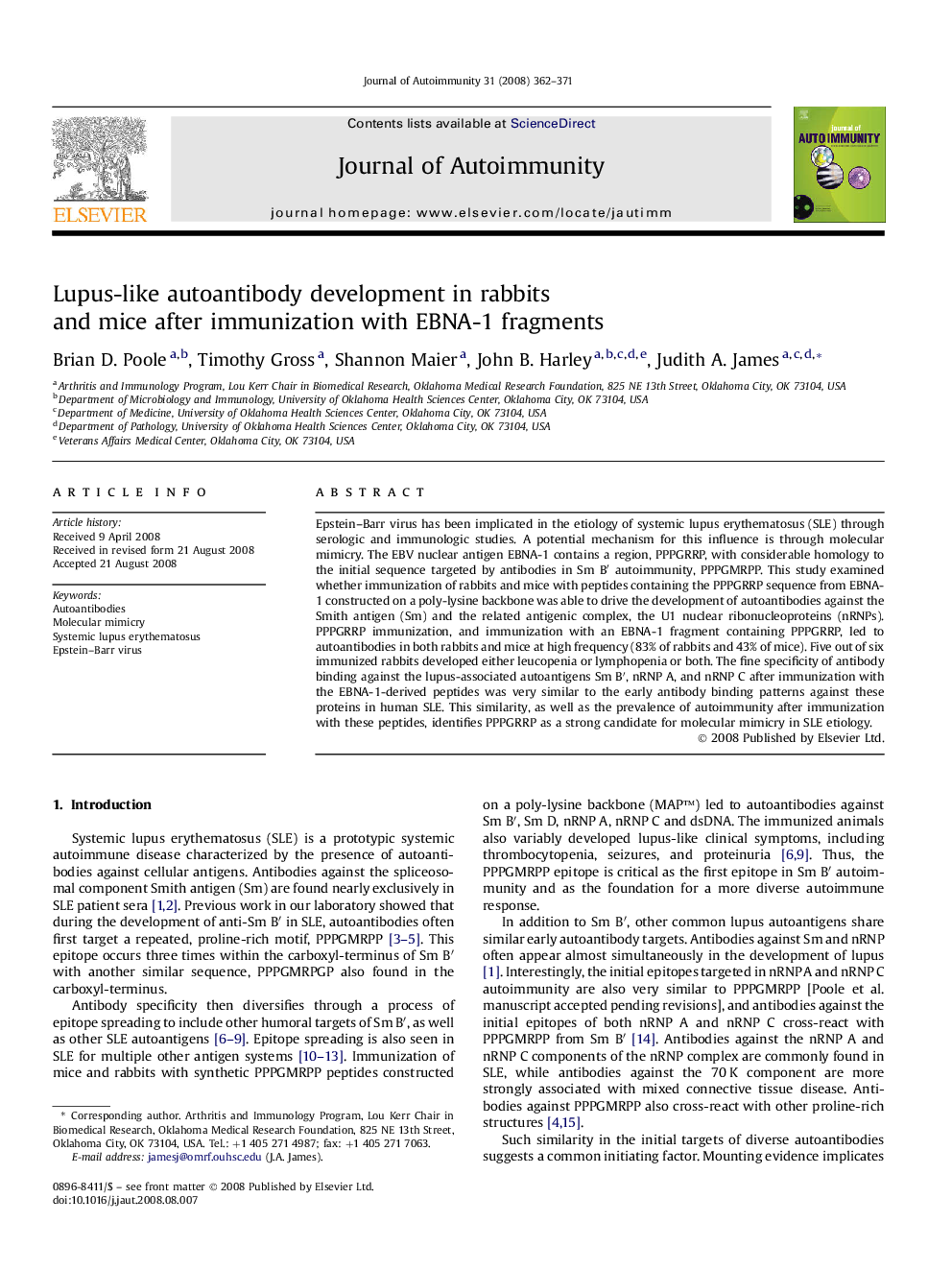| Article ID | Journal | Published Year | Pages | File Type |
|---|---|---|---|---|
| 3368140 | Journal of Autoimmunity | 2008 | 10 Pages |
Epstein–Barr virus has been implicated in the etiology of systemic lupus erythematosus (SLE) through serologic and immunologic studies. A potential mechanism for this influence is through molecular mimicry. The EBV nuclear antigen EBNA-1 contains a region, PPPGRRP, with considerable homology to the initial sequence targeted by antibodies in Sm B′ autoimmunity, PPPGMRPP. This study examined whether immunization of rabbits and mice with peptides containing the PPPGRRP sequence from EBNA-1 constructed on a poly-lysine backbone was able to drive the development of autoantibodies against the Smith antigen (Sm) and the related antigenic complex, the U1 nuclear ribonucleoproteins (nRNPs). PPPGRRP immunization, and immunization with an EBNA-1 fragment containing PPPGRRP, led to autoantibodies in both rabbits and mice at high frequency (83% of rabbits and 43% of mice). Five out of six immunized rabbits developed either leucopenia or lymphopenia or both. The fine specificity of antibody binding against the lupus-associated autoantigens Sm B′, nRNP A, and nRNP C after immunization with the EBNA-1-derived peptides was very similar to the early antibody binding patterns against these proteins in human SLE. This similarity, as well as the prevalence of autoimmunity after immunization with these peptides, identifies PPPGRRP as a strong candidate for molecular mimicry in SLE etiology.
